In its strenuous efforts to conduct the independence movement, the Korean Provisional Government encountered many difficulties, such as the cold shoulder turned toward Korea by world powers hoping for a return to international stability under the Versailles Peace Treaty, the barrier to communication between Koreans scattered around the world, including Shanghai, Manchuria, the Maritime Province of Siberia, Hawaii, etc., and the obstruction or non-cooperation of world powers like China, the Soviet Union, and the United States. Although the provisional government advocated a constitutional democratic republic, it was losing ordinary Koreans’ support due to its clumsy handling of affairs. As such, its leaders had to find a way to regain people’s support in its struggle for the country’s independence. As such, a session of the National Assembly was held in 1923 to listen to public opinions; the Constitution was amended twice (1925 and1927); and the United National Front Movement (1927) was formed.
The Constitution was amended five times as follows:
The 1st amendment (of the provisional Constitution) in 1919
The 2nd amendment (of the provisional Constitution) in 1925
The 3rd amendment (of the provisional summarized Constitution) in 1927
The 4th amendment (of the provisional summarized Constitution) in 1940
The 5th amendment (of the provisional Charter of the Constitution) in 1944
The type of government that the leaders continued to have in mind was the parliamentary system. Deviations from the mainstream included a compromise through the adoption of the presidential system in the first amendment of the Constitution, and a Swiss type of government with a Council of State in the third amendment. The leaders of the provisional government in Shanghai thought that the parliamentary system was fit for the country, but adopted a compromise between the parliamentary and presidential systems, while its counterpart in Hanseong (present-day Seoul) adopted the presidential system. Under the compromise, Rhee Syngman was inaugurated as the first President of the Korean Provisional Government, but this gave rise to political confusion due to the President’s monopoly of power. Thereafter, the provisional government adopted the parliamentary system headed by the Gungmuryeong (Cabinet President) through the second amendment of the Constitution in 1925. By that time, the provisional government was losing its authority, and the second amendment did not last long. Two years later, the Executive Branch of the government was subordinated to the Legislative Assembly through the third amendment of the Constitution.
Under the system adopted through the third amendment, the Juseok (Premier of State) served as the head of the Executive Branch, but he was merely the chairperson of the Cabinet Meeting. Rather, it was a collective leadership system led by members of the Cabinet. The Executive Branch of the government had to obtain the approval of the Legislative Assembly even in trivial matters like the relocation of an office, and was subject to supervision by standing committees of the Assembly.
One more noteworthy point in the third amendment of 1927 was that, upon the formation of a grand, national party, the supreme power of the provisional government was to revert to the United National Front Party. This idea arose under the influence of either the Soviet Union or the Republic of China (ROC), where the county was ruled by only one party (e.g. the Communist Party of the Soviet Union or the Nationalist Party of the ROC). It was for this reason that the United National Front Movement was started by members of the Provisional government. However, the movement collapsed following the breakup between the Nationalist Party and the Communist Party of China. The goal of forming grand, national party was accomplished domestically with the emergence of the Singanhoe (New Trunk Association), but it failed outside the country and resulted in a reshuffle of the independence movement camp.
After the amendment of the Constitution in 1927, certain political parties including the Joseon Revolutionary Party (headed by Ji Cheong-cheon), the Korea Independence Party (Jo So-ang), the Korea Nationalist Party (Kim Gu), and the Joseon National Revolutionary Party (Kim Gyu-sik and Kim Won-bong) were noticeably active. However, they were soon integrated with each other into two parties, namely, the Korea Independence Party (headed by Kim Gu) and the Joseon National Revolutionary Party (Kim Gyu-sik and Kim Won-bong), which claimed to stand for rightist socialism. The Korea Independence Party became the basis of support from ordinary Koreans for the provisional government. The members of the provisional government were having difficulties amid the subdued atmosphere even after the third amendment to the Constitution, but they began to recover their vitality following the heroic acts of Lee Bong-chang, who threw a bomb at the Japanese emperor in Tokyo in 1932, and Yun Bong-gil, who threw a bomb at a group of Japanese generals in Shanghai in 1932. Both independence activists belonged to the Patriots Corps associated with the provisional government. Thus, the provisional government was able to start carrying out two important objectives together, diplomacy and the struggle for independence, while simultaneously entering a more difficult period following the Japanese imperialists’ harsh crackdown on independence activists.
Due to the Japanese crackdown in China, the Korean Provisional Government, which was established in Shanghai in 1919, was compelled to leave Shanghai and move from one place to another in China [Hangzhou (1932), Zhenjiang (1935), Changsha (1937), Guangdon (1938), Liuzhou (1938), Qijiang (1939), Chongqing (1940)] following the second Sino-Japanese War (1937-1945).
@Source: The Encyclopedia of Korean Culture published by the Academy of Korean Studies (AKS)



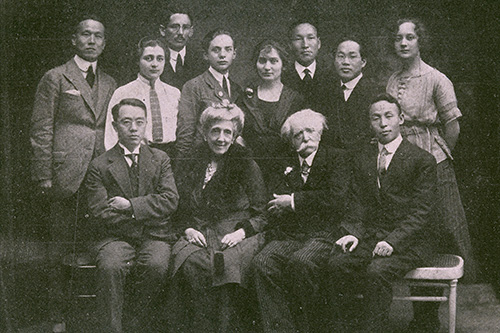
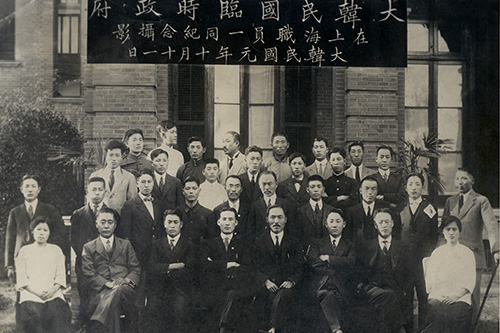 (From left) The delegation dispatched by the Korean Provisional Government to the Paris Peace Conference; Members of the Korean Provisional Government (1919) @Source: The Independence Hall of Korea
(From left) The delegation dispatched by the Korean Provisional Government to the Paris Peace Conference; Members of the Korean Provisional Government (1919) @Source: The Independence Hall of Korea
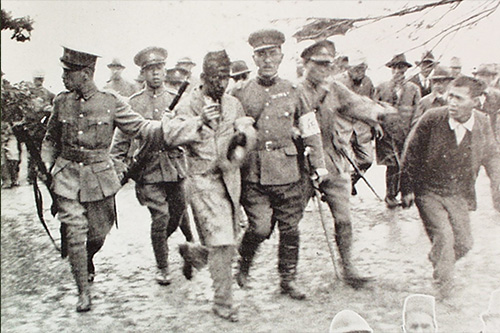
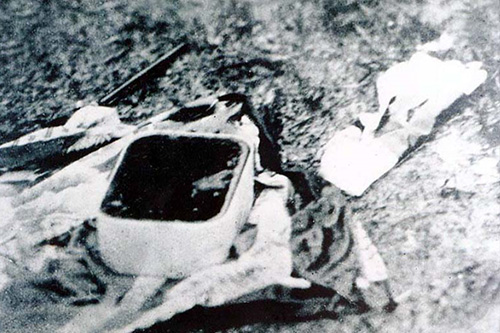 (From left) Yun Bong-gil right after throwing a bomb at a group of Japanese generals; Bomb fragments left at the site of the bomb attack @Source: The Independence Hall of Korea
(From left) Yun Bong-gil right after throwing a bomb at a group of Japanese generals; Bomb fragments left at the site of the bomb attack @Source: The Independence Hall of Korea
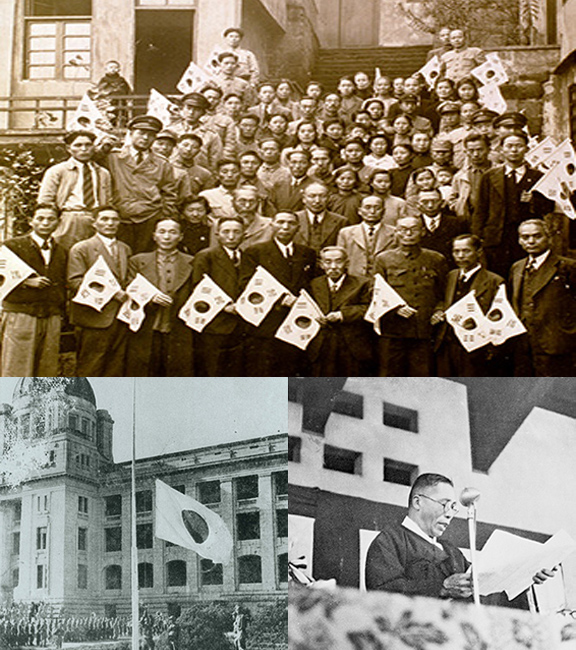
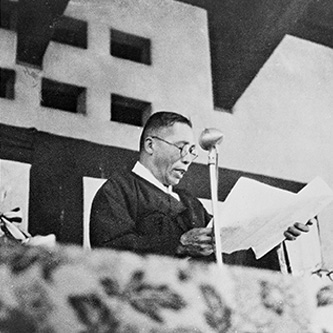
 (From left) The Japanese Flag being lowered at the flagpole of the Capitol Building; Kim Gu giving a speech at a ceremony welcoming the Korean Provisional Government; Leaders of the Korean Provisional Government posing for a photo taken to commemorate their return home from years of exile @Source: The Independence Hall of Korea
(From left) The Japanese Flag being lowered at the flagpole of the Capitol Building; Kim Gu giving a speech at a ceremony welcoming the Korean Provisional Government; Leaders of the Korean Provisional Government posing for a photo taken to commemorate their return home from years of exile @Source: The Independence Hall of Korea